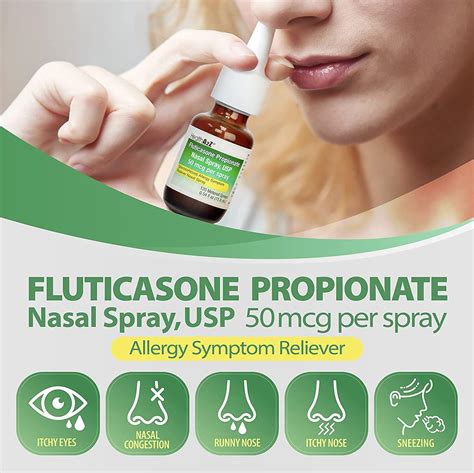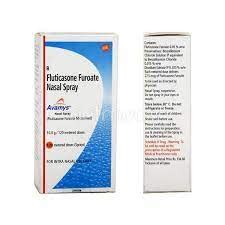Intro
Discover 5 ways Fluticasone nasal spray alleviates allergies, congestion, and sinusitis, providing relief from nasal polyps, rhinitis, and asthma symptoms with its anti-inflammatory properties.
Fluticasone nasal spray is a medication that has been widely used for the treatment of various nasal conditions, including allergic rhinitis, nasal polyps, and other inflammatory conditions of the nasal passages. The importance of understanding how fluticasone nasal spray works and its benefits cannot be overstated, especially for individuals who suffer from chronic nasal issues. This article aims to delve into the world of fluticasone nasal spray, exploring its mechanisms, benefits, and practical applications, making it an indispensable resource for both healthcare professionals and patients alike.
The prevalence of nasal allergies and other nasal conditions necessitates the use of effective treatments. Fluticasone nasal spray, being a topical corticosteroid, offers a localized approach to reducing inflammation and alleviating symptoms such as congestion, runny nose, and sneezing. Its popularity stems from its efficacy and relatively safe profile when used as directed. However, like any medication, it's crucial to understand its proper use, potential side effects, and how it interacts with other medications.
For individuals considering the use of fluticasone nasal spray, it's essential to consult with a healthcare provider to discuss the suitability of this treatment for their specific condition. A healthcare provider can offer guidance on the correct dosage, potential interactions with other medications, and what to expect in terms of benefits and side effects. This personalized approach ensures that patients receive the most appropriate care for their nasal health needs.
Introduction to Fluticasone Nasal Spray

How Fluticasone Nasal Spray Works
Fluticasone nasal spray works by inhibiting the release of substances in the body that cause inflammation. When used regularly, it can significantly reduce the symptoms of allergic rhinitis and improve the quality of life for individuals suffering from this condition. The onset of action may vary, but most people start to feel the benefits within a few days of starting the treatment.Benefits of Using Fluticasone Nasal Spray

Common Uses of Fluticasone Nasal Spray
Fluticasone nasal spray is commonly used for the treatment of: - Allergic rhinitis: Both seasonal and perennial. - Nasal polyps: To reduce the size of nasal polyps and alleviate symptoms. - Other inflammatory conditions of the nasal passages: Such as non-allergic rhinitis.Steps for Using Fluticasone Nasal Spray

Potential Side Effects and Interactions
While fluticasone nasal spray is generally well-tolerated, potential side effects and interactions should be considered: - **Local Side Effects**: Nasal dryness, irritation, or bleeding. - **Systemic Side Effects**: Though rare, include adrenal suppression and growth retardation in children. - **Interactions**: With other medications, such as ritonavir, and ketoconazole, which can increase the levels of fluticasone in the body.Practical Examples and Statistical Data

Comparison with Other Treatments
When comparing fluticasone nasal spray with other treatments for allergic rhinitis, such as oral antihistamines or decongestants, it's essential to consider the efficacy, safety profile, and patient preference. Fluticasone nasal spray offers a targeted approach with fewer systemic side effects, making it a preferred option for many patients.Conclusion and Future Directions

Final Thoughts
As with any medication, it's crucial to follow the prescribed dosage and consult with a healthcare provider if you have any questions or concerns. By doing so, you can maximize the benefits of fluticasone nasal spray while minimizing potential risks.What is fluticasone nasal spray used for?
+Fluticasone nasal spray is used for the treatment of allergic rhinitis, nasal polyps, and other inflammatory conditions of the nasal passages.
How long does it take for fluticasone nasal spray to start working?
+The onset of action may vary, but most people start to feel the benefits within a few days of starting the treatment.
Can I use fluticasone nasal spray if I have a cold or flu?
+Fluticasone nasal spray is not intended for the treatment of common cold or flu. However, if you have allergic rhinitis and are experiencing symptoms due to a cold or flu, consult with your healthcare provider for guidance.
We invite you to share your experiences or ask questions about fluticasone nasal spray in the comments section below. Your input can help others understand the benefits and potential considerations of this medication. Additionally, feel free to share this article with anyone who might benefit from this information, and don't hesitate to reach out to a healthcare professional for personalized advice on managing nasal health.
